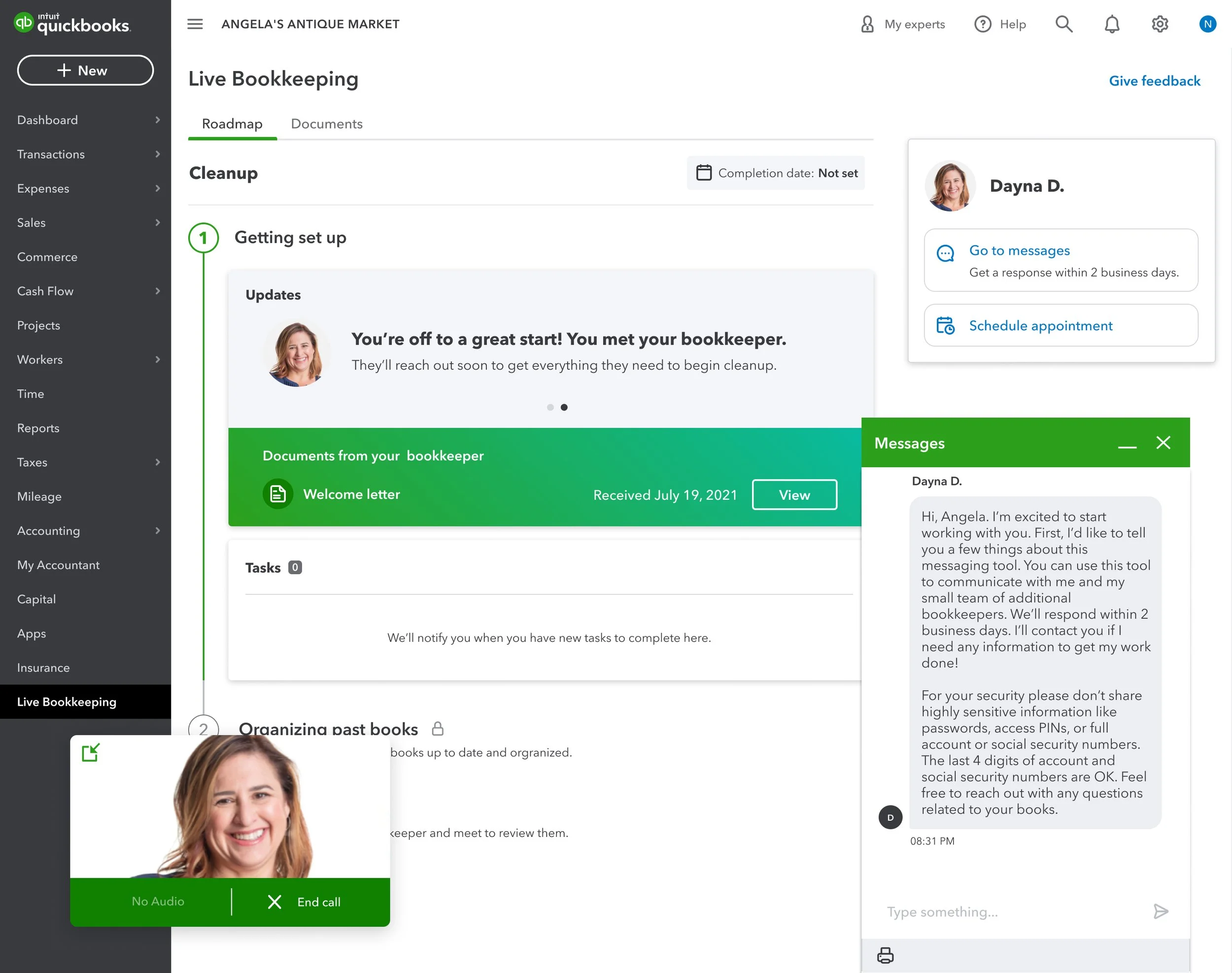QuickBooks Live Bookkeeping
The Problem
Misaligned messaging across marketing, product, and service created systemic friction for customers and bookkeepers. Marketing pages overpromised, product surfaces used inconsistent terms, and service delivery suffered as a result. Customers were frustrated and losing trust. This wasn’t something a little ‘content magic’ could fix. It was a product-level alignment gap that required cross-functional collaboration to serve both customers and bookkeepers.
The Solution
I led a content strategy refresh across product, marketing, and service so we could finally speak the same language. I built a set of principles—clarity, consistency, and expectation-setting—that guided decisions no matter the channel. Instead of patching copy, I partnered with engineering to restructure navigation, with marketing to reset positioning, and with service teams to align how bookkeepers talked to customers. The goal wasn’t prettier words—it was building trust through consistency and making sure every part of the experience fit together.
Live Bookkeeping Principles
It’s about the relationship
Focus on the business owner
Set realistic expectations
Keep it low-effort for the business owner
QuickBooks Principles
It’s about them, not us
Speak their language
Focus on the payoff
Keep it simple
-
It’s about the relationship
Highlight the relationship between users and bookkeepers to demonstrate value. Use “us” to mean QuickBooks (the product), making it clear when communication comes from a bookkeeper versus the system—reinforcing clarity and trust.
Focus on the business owner
Although some parts of QuickBooks Live Bookkeeping are visible to bookkeepers, avoid technical language and cater to the business owner.
Set realistic expectations
Any task feels difficult when the goal isn’t clear. Set expectations upfront, reward the user’s work, and find appropriate times to surface the bookkeeper’s work and show their value.
Keep it low-effort for the business owner
The business owner’s goal is to take bookkeeping off their plate. Don’t burden them by explaining too much. Give them only the information to complete their tasks—allow them to dig in later if they want.
The Outcome
Using the insights gained from research used to update the content strategy, along with additional interviews we conducted to test designs, we shipped a complete refresh of the Live Bookkeeping page to improve clarity and reduce friction:
Simplified navigation: Separated “Roadmap” and “Documents” into distinct tabs to reduce clutter.
Progress visibility: Added an “Updates” section to show users where they are in the process, highlight unopened documents, and celebrate small wins.
Clear next steps: Introduced “Tasks” to make it obvious what actions users need to take to keep things moving.
Expectation setting: Added completion date, document received dates, and “Get a response within 2 business days” under the messaging CTA to align expectations.
Lower barrier to contact: Simplified contact widget content, making it easier for users to reach out to their bookkeeper.
My Role
I started by reviewing the previous content strategy deck, a recent marketing audit, and conducting my own audit of the product to identify gaps. From there, I drove collaboration with marketing, conducted dozens of interviews, and secured buy-in from product and service teams. Once the new strategy was defined, I partnered with engineering to update content across emails, push notifications, landing pages, in-product messaging, and call scripts. I worked closely with my design partner to redesign the Live Bookkeeping page, rolling out the new roadmap design. Finally, I worked with bookkeeping managers to roll out the new approach through bookkeeper training.
The Impact
15-minute drop in average call times from clearer UI terms, which boosted efficiency.
Shorter call times increased appointment availability and customer satisfaction with scheduling.
Marked increase in positive user sentiment as seen in randomized reviews of recorded calls, asynchronous user feedback, and follow-up user interviews.
Increased first-30-day document uploads by 5–10 documents per user on average through consistent, actionable navigation.
20% increase in delivering Cleanup within 30 days as faster document submission streamlined workflows and reduced delays.






